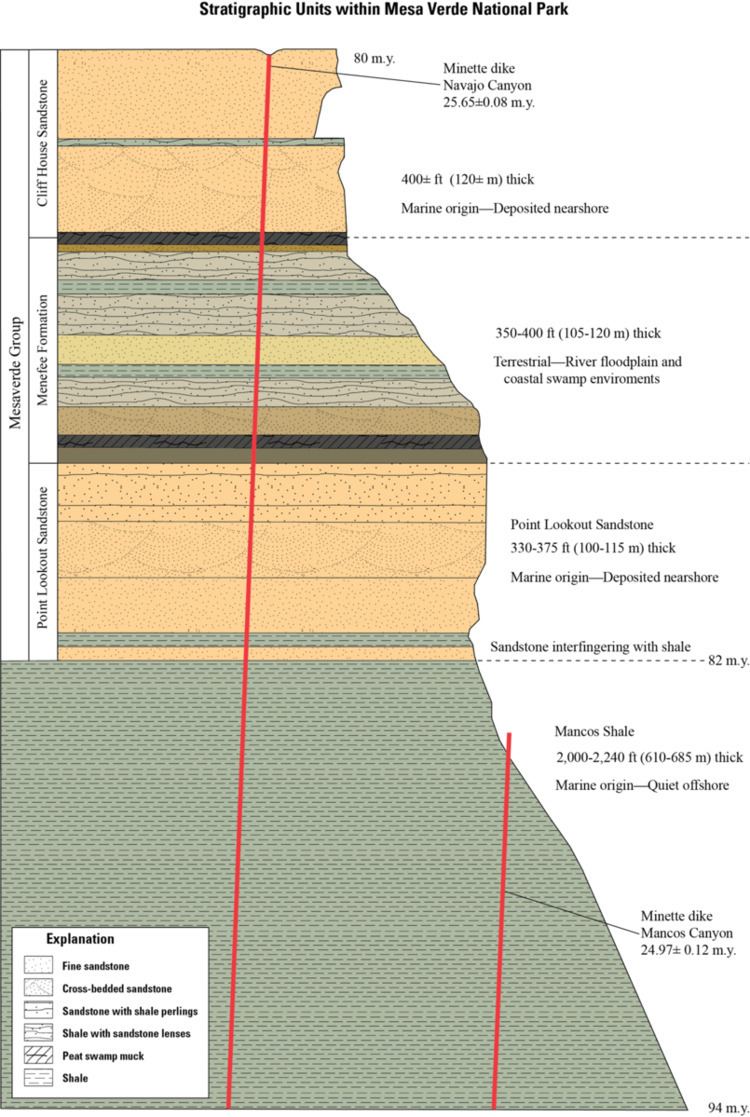Type sedimentary | Named by A. J. Collier, 1919 | |
 | ||
Regions | ||
The Point Lookout Sandstone is a Cretaceous bedrock formation occurring in New Mexico and Colorado.
Contents
Description
The sandstone was first described by A. J. Collier for exposures in cliffs at Point Lookout, in Mesa Verde National Park, Montezuma County, Colorado, in the Paradox Basin, and later described by Allen and Balk in 1954 as part of the Mesaverde Group in the San Juan Basin in New Mexico.
The formation was described by Cather (2010) as "Light gray to buff medium to finegrained, cross-bedded sandstone."
The Point Lookout sandstone was deposited in the Cretaceous Interior Seaway, as part of a regressive sequence as the seaway was receding. At the type section in Mesa Verde National Park, the Point Lookout overlies the Mancos Shale, and is overlain by the Menefee Formation. The Point Lookout was deposited in a marginal marine environment, transitional between the marine environment of the underlying Mancos, and the coastal plain environment of the overlying Menefee Formation.
Fossils
Dinosaur remains are among the fossils that have been recovered from the formation, although none have yet been referred to a specific genus.
The ammonite Clioscaphites vermiformis was identified in the formation.
